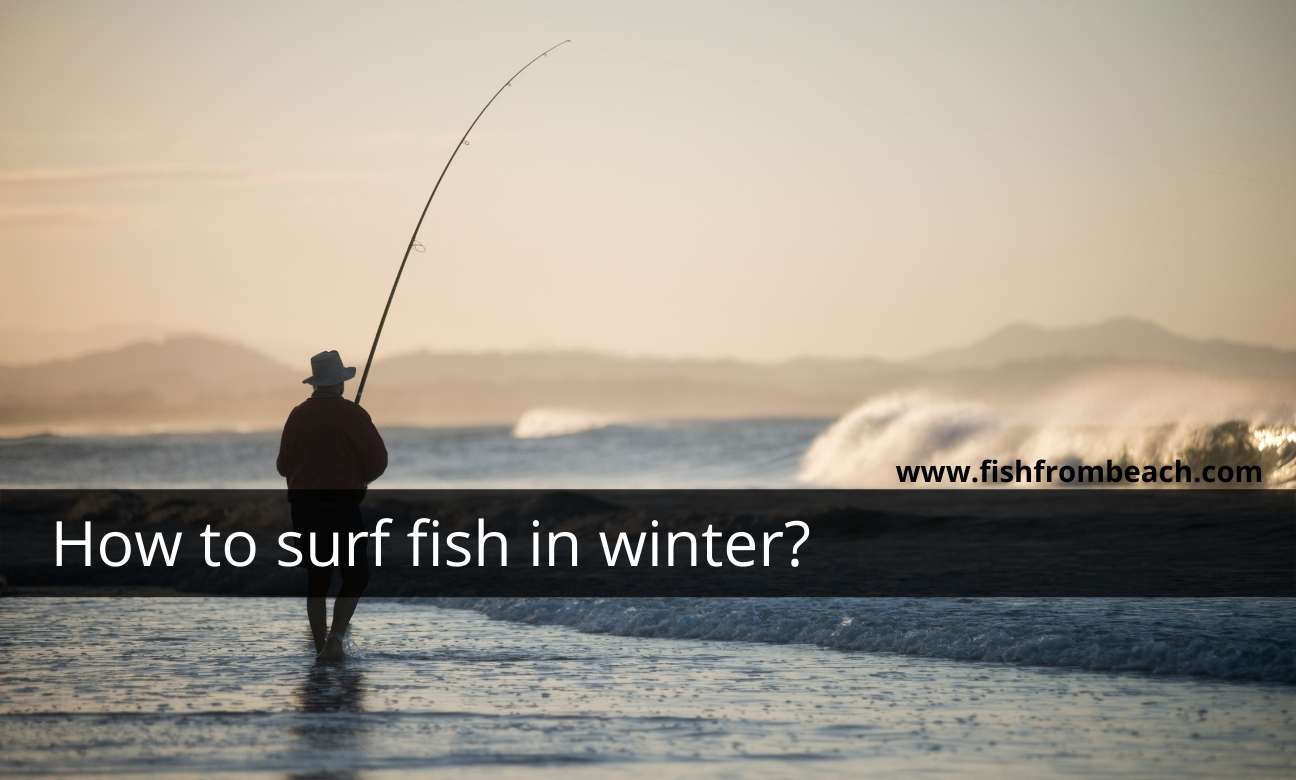
Surf fishing in winter tends to be less rewarding compared to the other seasons of the year. This is because the water temperature goes so low which stresses the fish and decreases their appetite.
As a result, fish choose to either move offshore in search of warmer waters or to hold sluggishly in the surf with little interest in food.
In both cases, the common outcome is fewer bites and catches, which is why many surf anglers consider winter to be the worst season for surf fishing.
However, all of the above doesn’t mean you should be discouraged from fishing off the beach in winter.
In this article, we will discuss 5 tips that will boost your results when surf fishing in winter. By following these tips, you will be able to compensate for the low fish activity and thus score more catches and bites.
1- Move south if possible
Where you go fishing in winter is the primary factor that dictates your productivity.
The goal is to find a place where the water is warm enough for the fish. As a rule of thumb, the best water temperature that allows for normal fish feeding is between 55 and 75°F.
This range should always be on your radar when deciding where to fish.
The thing to remember here is that the further south we move, the warmer the winter gets. This is why Florida and the Gulf are considered the best places for winter surf fishing.
South Carolina and Georgia are also good, but I wouldn’t move north more than that.
In the northern part of the country, the average water heat in winter ranges between 40 and 55°F, which is too low and chilly for most species. Nothing to expect from that.
2- Look for tiny sand particles
Once you decide the state, it’s time to consider the beach to fish from. Look for mixed seabeds with a bit of grass, sand, mud, and a few rock boulders. Such structures retain heat more effectively and therefore can concentrate a lot of fish.
Clear muddy/sandy terrains are also good. In general, the smaller the sand sediments, the better the heat retention. This should stay in your mind when picking a beach for surf fishing.
In summer, opt for beaches with big rocky sediments because they cool down the water. In winter, however, choose a sandy beach with tiny particles because they are warmer for the fish.
3- Use smelly bait
The appetite and feeding activity of fish decrease in winter. Your offering should therefore be appealing and appetizing to make them move.
The scent of fish is what you should target here. Meaning, the more smells and oils your bait releases in the water, the more fish it will attract.
That’s why I believe cut bait is the better option in winter.
I mean, live bait is always rewarding, but in winter, a smelly chunk of dead bait may pay better dividends.
Pilchard, shrimp, mackerel, and mullet are all good candidates for this.
Artificial bait is unlikely to be as effective as natural bait in chilly waters, but if you are into that, don’t hesitate to thread a strip of squid or shrimp into the hooks of your lure.
4- Keep your bait moving
In winter, picking a good bait is important, but if you plan to just throw it in the waves and wait, then you may wait for a long time before something interesting happens.
As we said, fish become slow and lethargic in cold waters. And with their weak appetites, they’d rather hold still in warm pockets and corridors than waste energy scavenging for food.
As a result, your role is to keep the bait moving on the seabed and try to cover as much ground as possible.
This way, you increase your chances of passing next to a fish while it is there ambushing prey.
One way to achieve that is to cast the bait and then slowly pickup the line with a few rod jerks along the way.
Once you reach the shoreline, check if the bait is still fresh, renew it if needed, and re-cast.
Another way to cover more ground when surf fishing is to use a fish finder rig or Carolina rig. These two setups allow the bait to float and spin freely in the water, which helps to expose the bait in different zones at the same cast.
Keep the leader long (at least 3ft) and use adequate casting weight so the currents cannot drift your offer out of the strike zone.
And of course, don’t forget to try different spots in the surf zone. If one place brings nothing for 15 minutes, change it and never look back.
5- Choose the right tackle
Nothing special here, but your tackle should help you try different spots in the surf zone.
In other words, you need to be able to perform decent casts and try remote areas if the nearby zones bring nothing.
A combo of a long 10-12ft pole with a 5000-6000 reel should do the job.
If you can maneuver a longer rod and larger reel, go for it. But do not ignore comfort and balance. Only use what you can handle effectively for the entire day.
Most of your catches in winter will weigh less than 5 pounds. However, mackerel, tuna, and sharks, if available in your area, can occasionally hit your baits as well.
That’s why I always favor heavy gear, regardless of the season. It simply gives the leverage and control to handle every situation.
With this in mind, note that light lines are generally the better choice in winter. They help to cast farther and therefore allow to cover more ground when retrieving the line.
That’s why you should consider braid.
Braided lines offer high breaking strengths with very thin diameters. In other words, they make it possible to target the sizable species without compromising the castability.
Some recommended surf fishing gear(*)
Note (*): If you make a purchase through links from this website, we may get a small share of the sale from Amazon or other similar affiliate programs.
Surf Fishing Survey
Help us provide you with better content by answering simple questions about your surf fishing experience and knowledge.
We will put the collected responses together and turn them into valuable information that will help you catch more fish from shore 😉
Note: No personal information will be collected with your answer.

